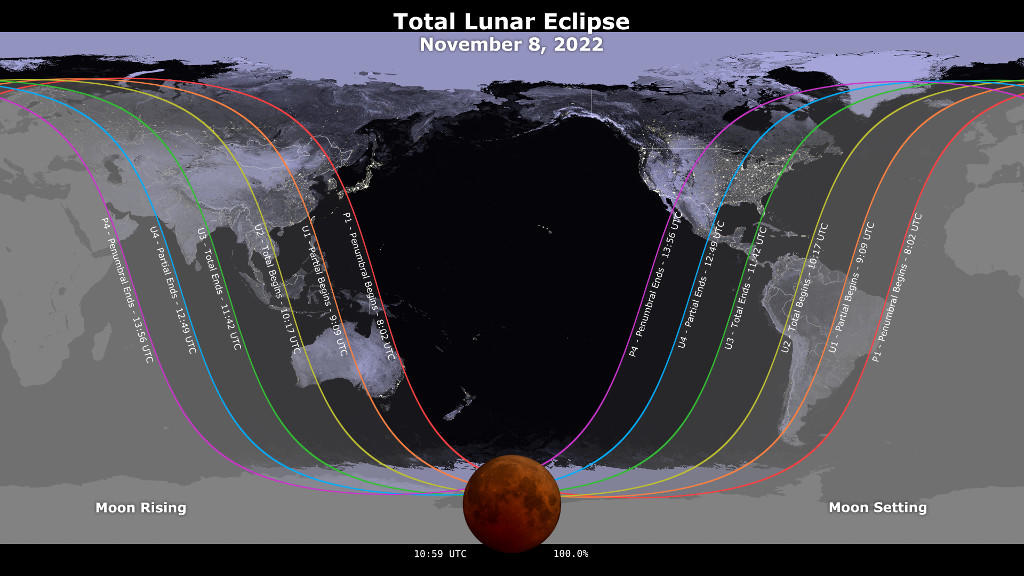Blood moon will emerge on Election Day in last total lunar eclipse for 3 years
The normally bright and glowing moon will appear an eerie red early Tuesday, in the last total lunar eclipse for the next three years. The so-called "Beaver Moon," as November's full moon is known, will reach its peak illumination at 6:02 a.m. EST, during the lunar eclipse.
NASA said the total lunar eclipse — when the sun, Earth and moon align so that the moon goes into Earth's shadow — will occur on Nov. 8, Election Day. The eclipse will begin at 3:02 a.m. ET, and totality — when the moon is within the darkest part of Earth's shadow and appears a bright red, earning it the nickname of "blood moon" — will last from about 5:17 a.m. to 6:42 a.m. Eastern.
The blood moon stage of the eclipse will be visible from North and Central America, Ecuador, Colombia and western areas of Venezuela and Peru. Those in Hawaii will be able to see every stage of the eclipse, NASA said.
In a video posted on Twitter, NASA said the eclipse will provide a little "celestial magic."
"You will be able to see the entire eclipse unfold before sunrise, weather permitting, as the moon exits the dark part of Earth's shadow, called the umbra," NASA said.
No special equipment will be required to watch the eclipse, although being in an area away from bright lights will make it more visible. Those who have binoculars on hand will get the added perk of being able to see the ice planet Uranus, "just a finger's width away from the eclipsed moon," NASA said.
The last total lunar eclipse was in May. That eclipse created what's known as the "super flower blood moon," which only happens when there is a total lunar eclipse as the full moon is at its closest point to Earth. Millions were able to spot the giant red-looking space object from the Americas, Europe and Africa.

